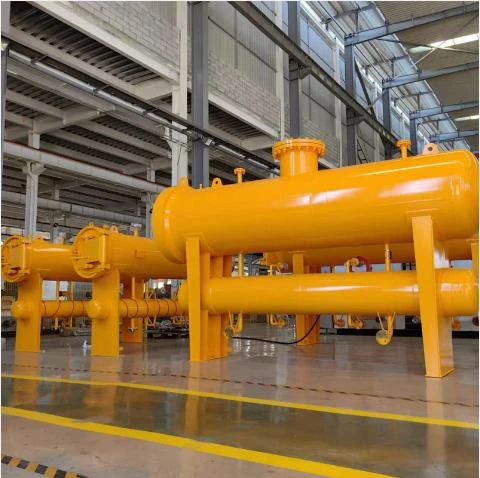
Dec . 24, 2024 23:05
Back to list
Understanding Gas Safety Relief Valve Functionality and Importance in Pressure Regulation
Understanding Gas Safety Relief Valves A Critical Component for Safety
Gas safety relief valves are essential devices used in various industrial applications to ensure safety and prevent hazardous situations. These valves play a fundamental role in managing pressure levels within gas systems, thereby protecting equipment and personnel from potential accidents caused by overpressure. Understanding the functionality, importance, and maintenance of these valves is crucial for anyone working with gas systems.
The Importance of Gas Safety Relief Valves
Gas safety relief valves are designed to release pressure when it exceeds predetermined limits. When gas is contained in a closed system, the pressure can build up due to various factors, such as temperature changes or blockages. If this pressure is not managed effectively, it can lead to dangerous situations, including explosions or equipment failures. Safety relief valves act as a safety net, ensuring that excess pressure is vented harmlessly, thereby safeguarding both people and property.
These valves are required by many safety standards and regulations across industries. In sectors such as oil and gas, chemical manufacturing, and food processing, compliance with regulations related to gas safety relief valves is mandatory. Their presence not only protects the physical assets of a company but also helps to maintain a safe working environment, minimizing the risk of accidents that could harm employees or harm the environment.
How Gas Safety Relief Valves Work
The basic operation of a gas safety relief valve involves a spring mechanism that holds the valve closed until the pressure reaches a specific limit. The valve will open automatically to allow gas to escape when that limit is exceeded. Once the pressure returns to a safe level, the valve closes again. Most safety relief valves are designed for either automatic or manual operation, providing flexibility depending on the requirements of the system.
gas safety relief valve

There are two primary types of gas safety relief valves spring-loaded and pilot-operated. Spring-loaded valves are the most common and are typically more straightforward in design. They rely solely on spring tension to operate. Pilot-operated relief valves, on the other hand, use a smaller pilot valve to control a larger main valve. This type can handle higher pressure differentials and is often more efficient in applications requiring precision.
Maintenance and Inspection
Regular maintenance and inspection of gas safety relief valves are vital to ensure they function correctly when needed. Over time, components can wear out or become clogged with debris, which may render a valve ineffective during a pressure event. A comprehensive maintenance program should include routine checks for proper operation, as well as cleaning and, if necessary, replacing worn parts.
Additionally, testing the valves at regular intervals can help identify any issues before they become critical. Common practices include bench testing or field testing, where the valve is subjected to controlled pressure conditions to ensure it opens and closes as designed. Keeping a detailed log of inspections and maintenance activities can also help in meeting regulatory compliance and improving safety processes.
Conclusion
Gas safety relief valves serve an indispensable function in maintaining safety in gas systems. By regulating pressure and preventing overpressure situations, these devices protect not only the equipment but also the individuals who work within these environments. Understanding their operation, the different types available, and the importance of maintaining these valves is crucial for any organization dealing with gas systems.
As industries continue to evolve and adopt more complex technologies, the importance of gas safety relief valves will only increase. Investing in high-quality valves and committing to rigorous maintenance schedules ensures that safety remains a priority, enabling organizations to operate efficiently without compromising the well-being of their employees and the surrounding community. In the realm of gas safety, knowledge and vigilance regarding relief valves are key to preventing disasters and sustaining safe operations.
Latest news
-
Safety Valve Spring-Loaded Design Overpressure ProtectionNewsJul.25,2025
-
Precision Voltage Regulator AC5 Accuracy Grade PerformanceNewsJul.25,2025
-
Natural Gas Pressure Regulating Skid Industrial Pipeline ApplicationsNewsJul.25,2025
-
Natural Gas Filter Stainless Steel Mesh Element DesignNewsJul.25,2025
-
Gas Pressure Regulator Valve Direct-Acting Spring-Loaded DesignNewsJul.25,2025
-
Decompression Equipment Multi-Stage Heat Exchange System DesignNewsJul.25,2025

